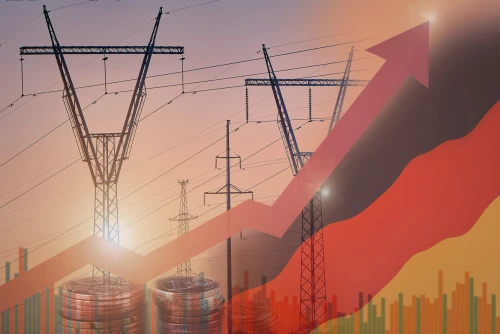
April 24th, 2025
Join our Italian Energy Day on 20 May – Book now
Power-to-X technologies are emerging as innovative solutions to meet high-energy demands sustainably by converting renewable energy into usable forms.

As renewable energy as a real option for industry and consumers begins to gather momentum, the lens is turning onto processes with high-energy requirements. Heating, manufacturing and heavy industry all require fuels that currently outstrip the capabilities of some renewable energy types, and so some projects are looking to Power-to-X Technologies that will fulfil these higher energy needs.
Power-to-Gas (P2G) is a process that converts renewable electricity into hydrogen or synthetic gas via PEM electrolysis. A more environmentally friendly method of using natural gas for energy, this hydrogen can be injected into the wider natural gas grid, taking the place of less environmental friendly natural gases and easing our dependance of fossils.
Hydrogen for transportation: A common use for P2G is for hydrogen transportation. In Europe and beyond, local authorities are utilising the power of hydrogen to run public transport fleets.
Energy storage: Hydrogen fuel cell batteries are gaining in popularity, while hydrogen storage has the ability to store renewable energy for longer periods.
Grid stabilisation: Hydrogen has the benefit of being able to integrate different types of energy sectors, including heating, electricity, and gas, which in turn helps to stabilise the grid.
Direct injection: P2G allows hydrogen to be injected directly into the natural gas grid, alleviating reliance on less environmentally friendly methods of natural gas.
Other key applications for P2G include waste-to-synthetic fuels, space heating, and biogas production.
Power-to-Liquids is a process that transforms renewable energy into synthetic liquid hydrocarbon or fuels, such as e-fuels. PtL harnesses the power of renewable energy for production, as well as carbon dioxide and water.
Electrolysers are utilised in producing green hydrogen.
Carbon feedstock is produced by capturing climate-neutral carbon dioxide.
Green hydrogen is then synthesised with carbon feedstocks to create liquid hydrocarbons.
Liquid hydrocarbons are then converted into synthetic kerosene.
Shipping: Due to its JetA/JetA1-status, P2L is seen as a solution for transport requiring fuelling over a long distance, such as long-haul shipping.
Industrial: Heavy industrial activity requires fuelling over a long period, making P2L a good source of energy for the industrial sector.
Aviation: Companies such as Airbus are turning their attention to P2G, as the kerosene produced has the required energy density to make low-carbon flying a possibility.
Power-to-Heat (P2H) is a desirable energy source due to its ability to convert renewable energy into thermal energy. P2H is unusual in the sense that it uses unneeded electrical power and converts it into heat in an extremely precise way.
Residential heating: P2H is gaining popularity in residential heating, as new ways of heating the home are being explored and consumers become more environmentally savvy. Various methods are available, including electric heating rods, which can also be used in commercial heating ventures.
District heating: District heating is also a good application for P2H because it requires very high levels of heating levels of which renewable energy is easily capable of reaching. P2H is capable of reaching more than 400 degrees Celsius, making it a good alternative to fossil fuels.
Industrial processes: The need for industrial heating is increasing, with processes such as roasting, thermochemical treatments, drying, and heating requiring high levels of energy. P2H electrifies pre-heating and heating actions, offering an environmentally friendly alternative to traditional fossil fuel combustion.
Power-to-X is still in the early stages of adoption compared to traditional fuel methods. As a result, these technologies tend to come with their own individual challenges.
As a fairly energy-intensive process, Power-to-X technologies can result in lower levels of efficiency compared to traditional fuel methods. For instance, P2G technologies involve electrolysis, methanation, and storage, which can result in energy loss. Often, conversion efficiency is only about 50-75%, with more energy being lost during methanation.
Our current energy distribution infrastructure is based on fossil fuel input and output. In the case of P2G, current infrastructure may not handle hydrogen flooding the grid. Similarly, in P2H, coupling issues might occur between district heating systems and the grid. These challenges necessitate refining and updating infrastructure to accommodate new technologies.
Cost is always a factor, and P2G is no exception. The process of electrolysis remains expensive compared to fossil fuels. In the case of P2L, the production cost of synthetic fuels far exceeds that of conventional aviation fuel. To lower costs, further research and in-depth studies on Power-to-X technologies are essential.
Power-to-X technologies present an exciting opportunity to transition to a more sustainable energy future. However, overcoming challenges in efficiency, infrastructure, and cost is critical to realising their full potential.
Assess investment opportunities and optimise existing power production plants

April 24th, 2025

April 23rd, 2025

April 22nd, 2025